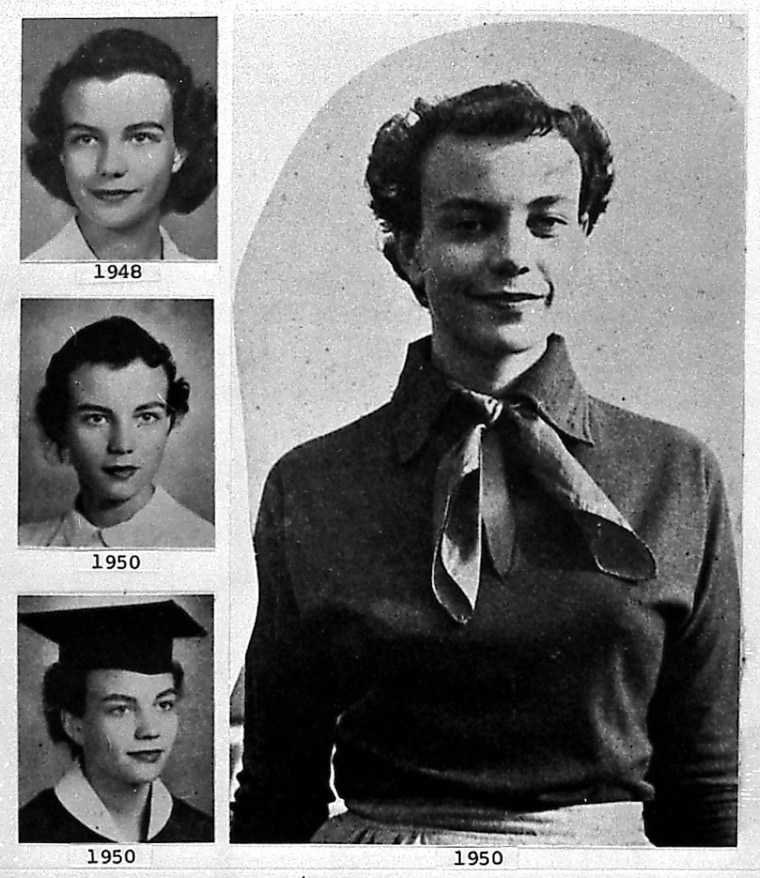
Photo
Trailblazing Supreme Court Justice Sandra Day O'Connor's life in photos
O'Connor, the first woman to serve on the Supreme Court and the justice who held the court's center for more than a generation, died Friday She was 93.

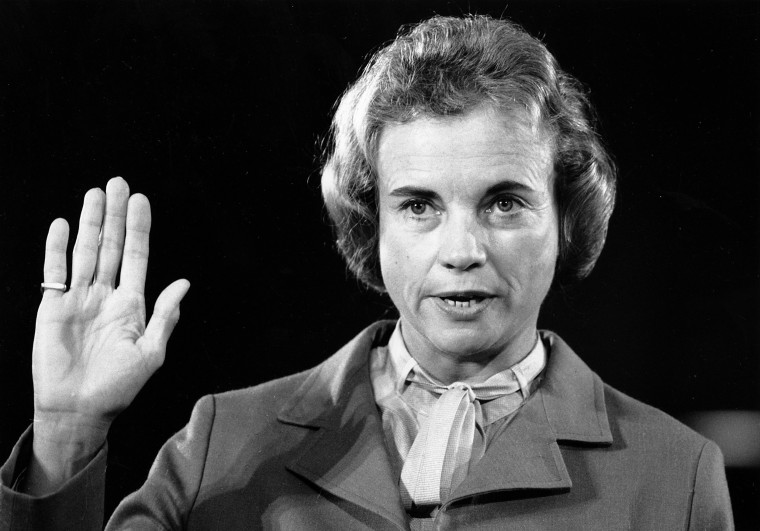
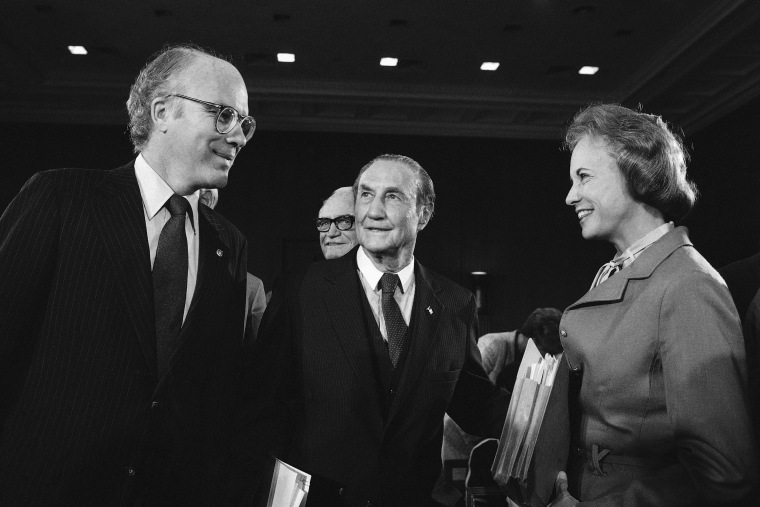
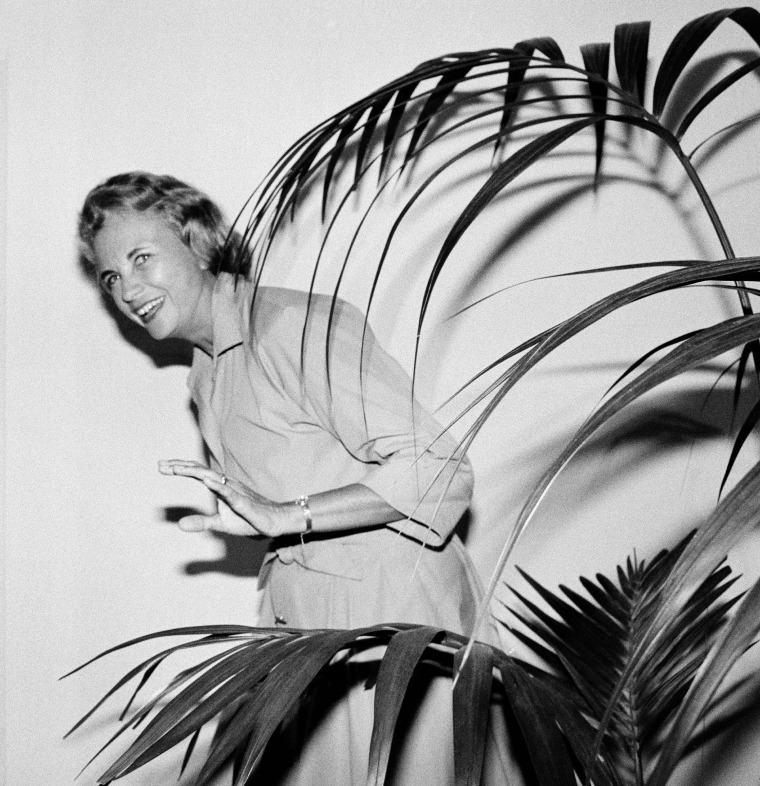
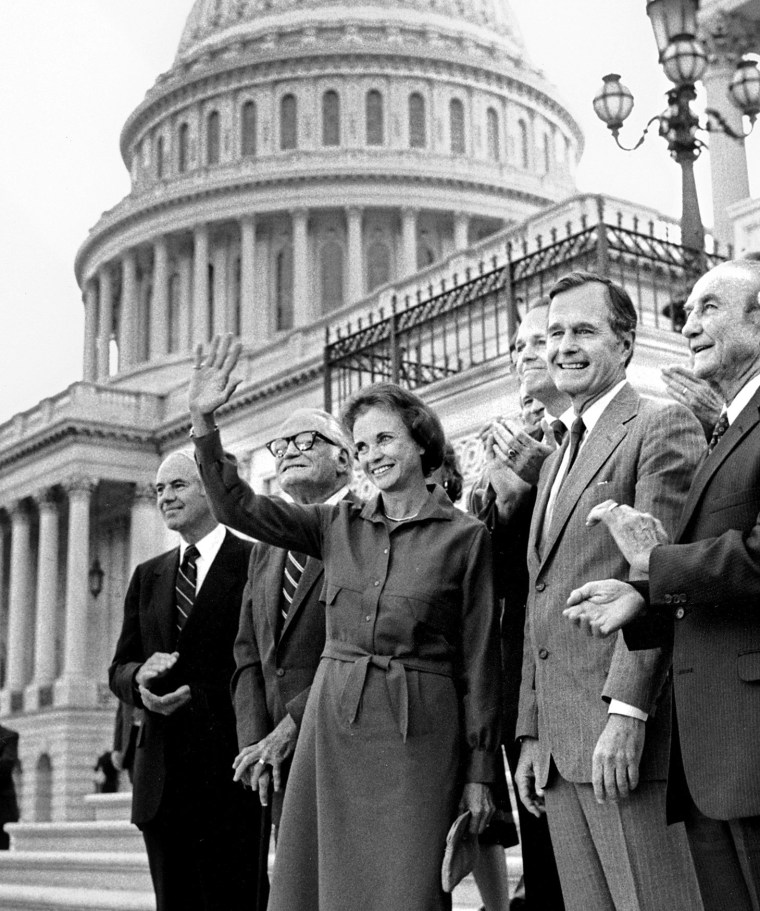
O'Connor waves after her unanimous confirmation on Capitol Hill on Sept. 21, 1981. Standing with her from left: Attorney General William French Smith, Sen. Barry Goldwater, R-Ariz., Sen. Dennis DeConcini, D-Ariz., Vice President George H.W. Bush, and Senate Judiciary Committee Chairman Sen. Strom Thurmond, R-S.C.

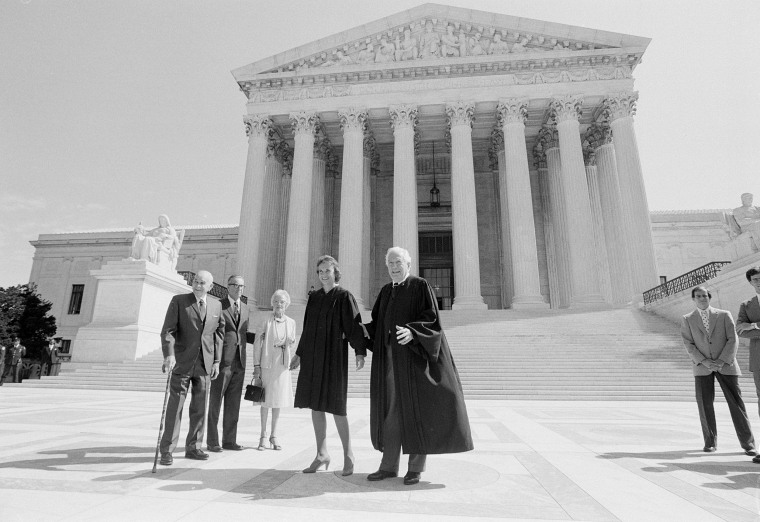
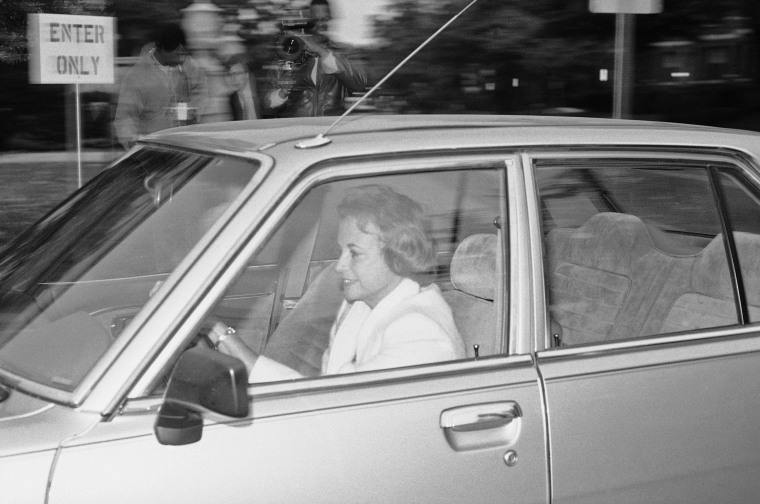
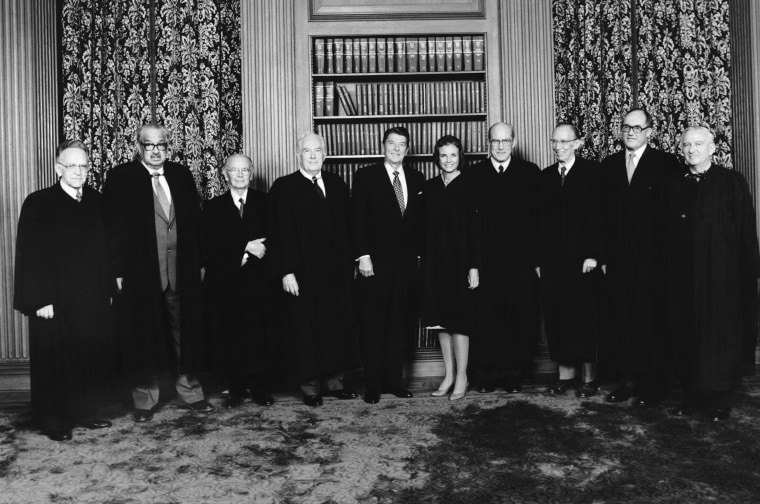
The nine justices, including the newly sworn-in O'Connor, pose with Reagan in the conference room of the Supreme Court on Sept. 25, 1981. From left, Harry A. Blackmun, Thurgood Marshall, William J. Brennan, Burger, Reagan, O'Connor, Byron White, Lewis Powell, William Rehnquist and John Paul Stevens.
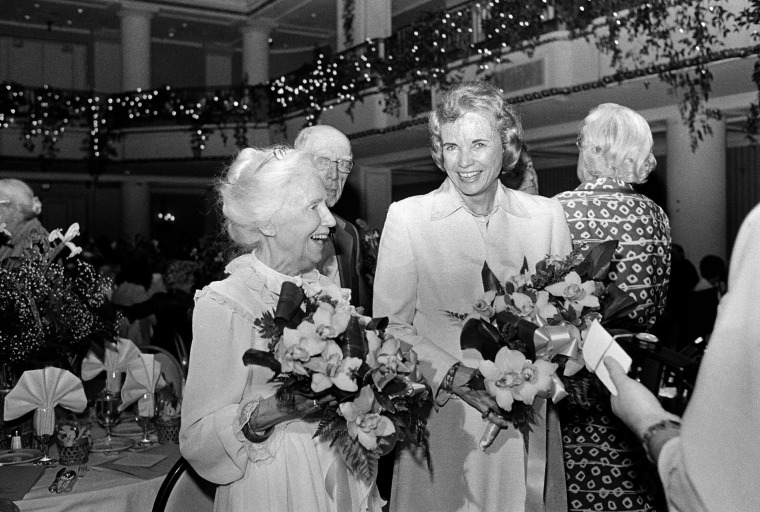
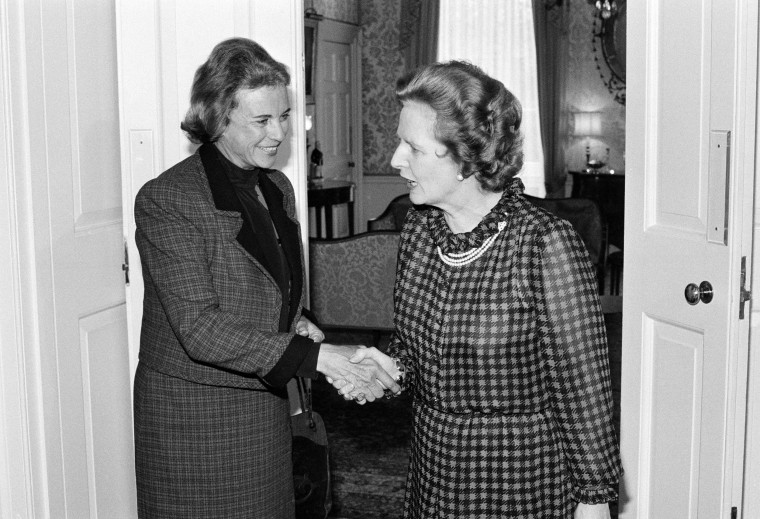

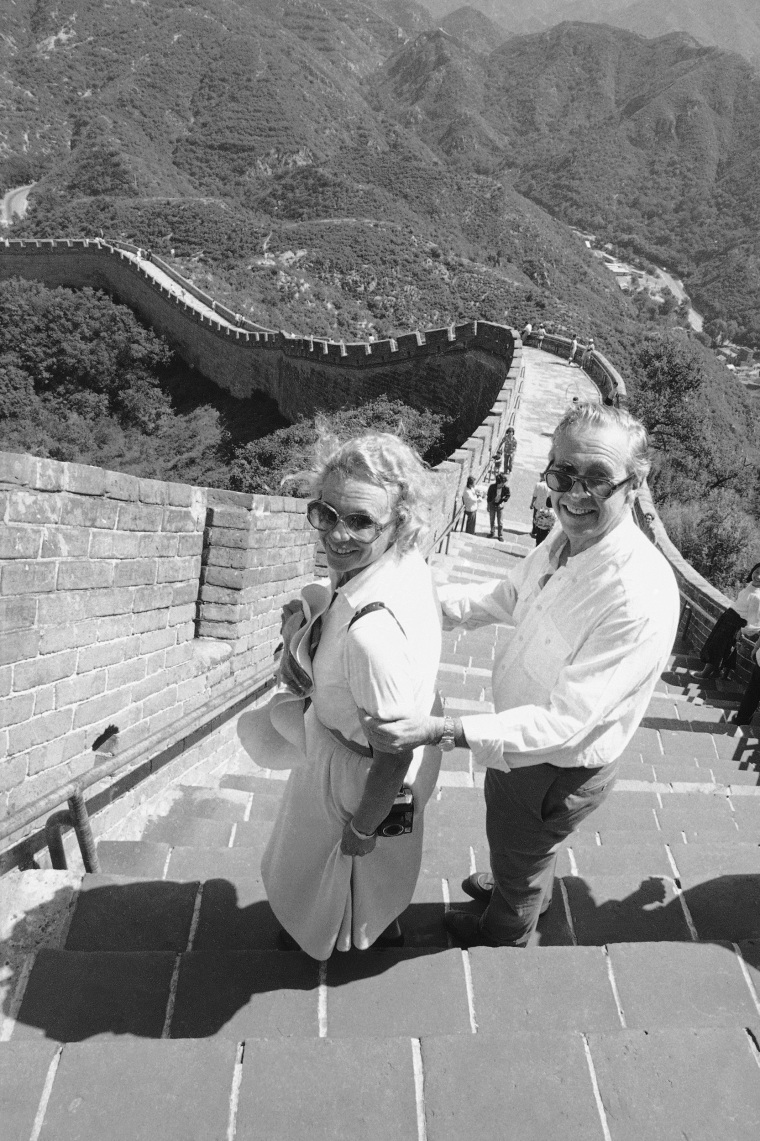
O'Connor and her husband, John, pause on Aug. 28, 1987 as they navigate a steep stretch of China's famed Great Wall at Badaling, near Beijing, during a private visit to that country.
O'Connor met her future husband in law school at Stanford University. They married in 1952 and had three children.
At age 75, O'Connor abruptly announced her intention to step down from the Supreme Court to attend to her husband, who had Alzheimer's disease. He died in 2009 at age 79.
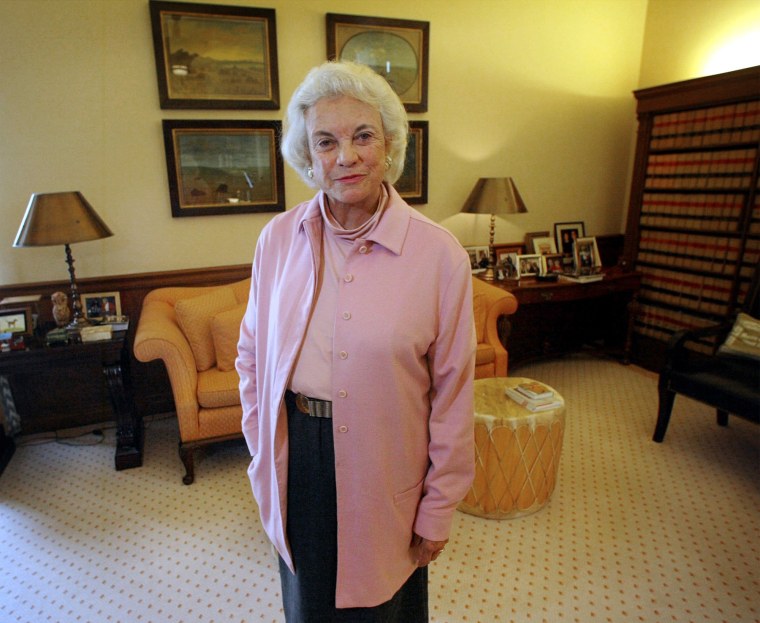
O'Connor in her office at the Supreme Court on April 7, 2003.
From the early 1990s until her retirement in 2006, she was the indisputable swing justice, often casting the deciding vote in the court's most contentious cases. Her lack of a consistent judicial philosophy rankled some, but others praised her practical bent as a moderating influence.
She sometimes sided with the court's conservatives, approving taxpayer-funded vouchers for students at religious schools, voting to end the 2000 Florida recount between George W. Bush and Al Gore, and advocating for states' rights against federal control.
But she joined with the court's liberals in upholding affirmative action in college admissions, approving the creation of more congressional districts with Black voters in the majority, and keeping a wall of separation between government and religion.

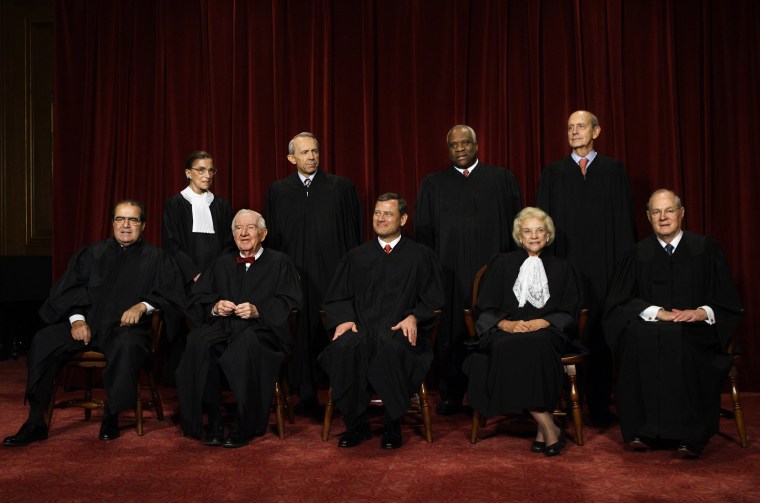
The justices gather for a group portrait at the Supreme Court Building on Oct. 31, 2005.
From left in front row are: Associate Justice Antonin Scalia, Associate Justice John Paul Stevens, Chief Justice John G. Roberts Jr., Associate Justice Sandra Day O'Connor and Associate Justice Anthony M. Kennedy. From left in back row are: Associate Justice Ruth Bader Ginsburg, Associate Justice David Souter, Associate Justice Clarence Thomas and Associate Justice Stephen Breyer.
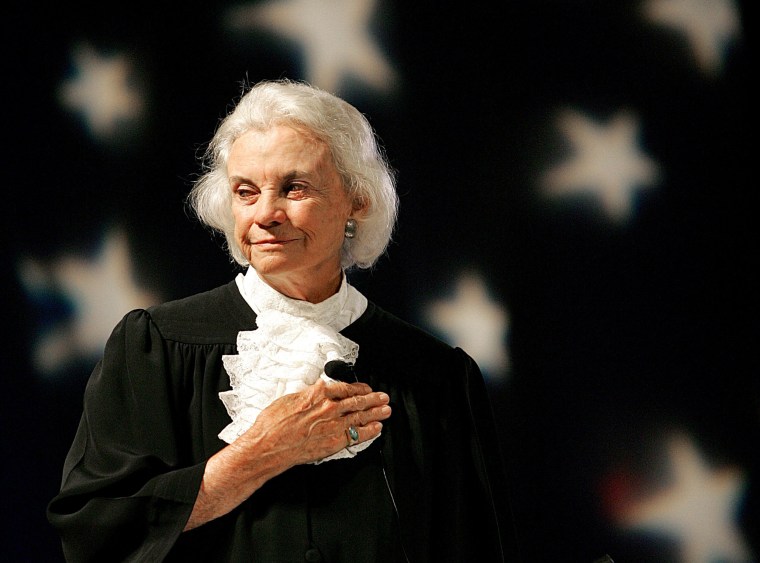
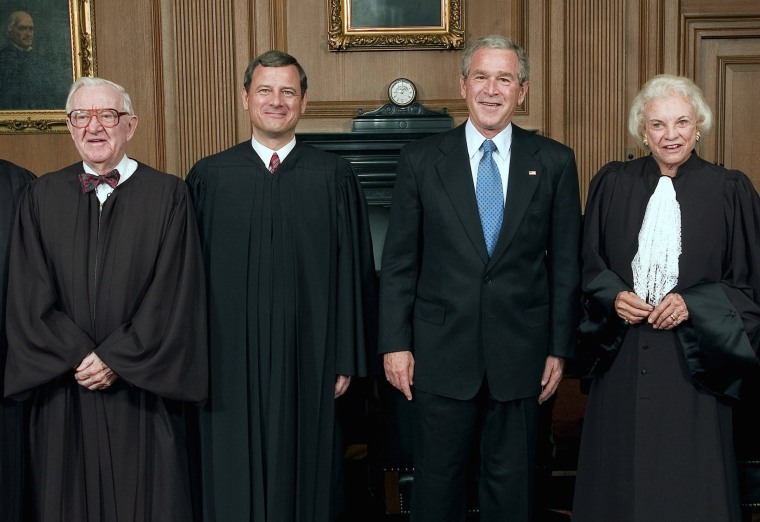
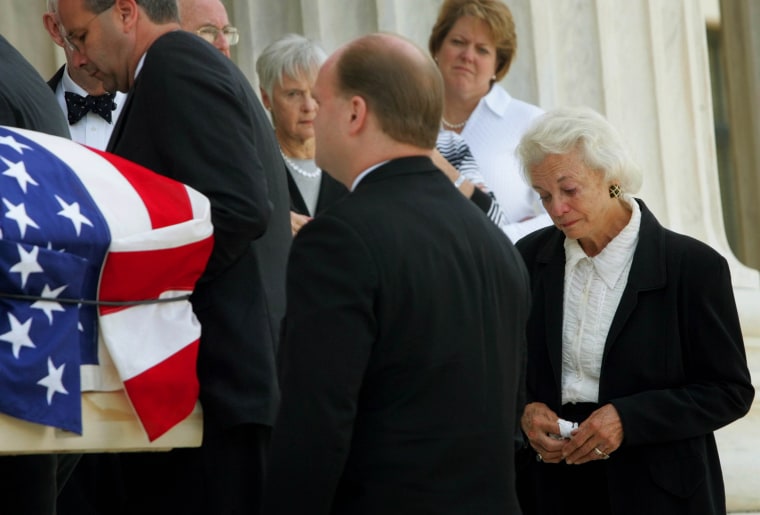

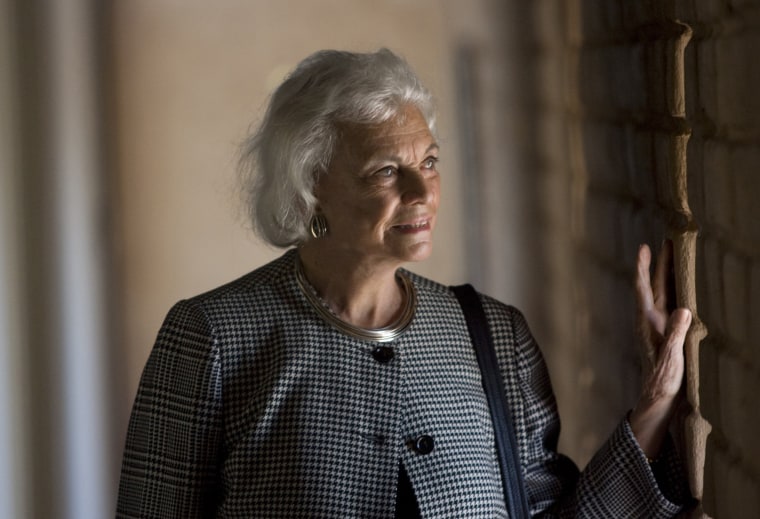
O'Connor on March 1, 2010, in her 1958 adobe home that was moved and restored at the Arizona Historical Society Museum in Tempe, Arizona. As the first female justice, her every action was scrutinized, attention she would later say was intimidating.
"It's thrilling, in a way, to be the first to do something, the first woman ever to serve on the court. But it's dreadful if you're the last. And if I didn't do the job well, that's what would happen."
